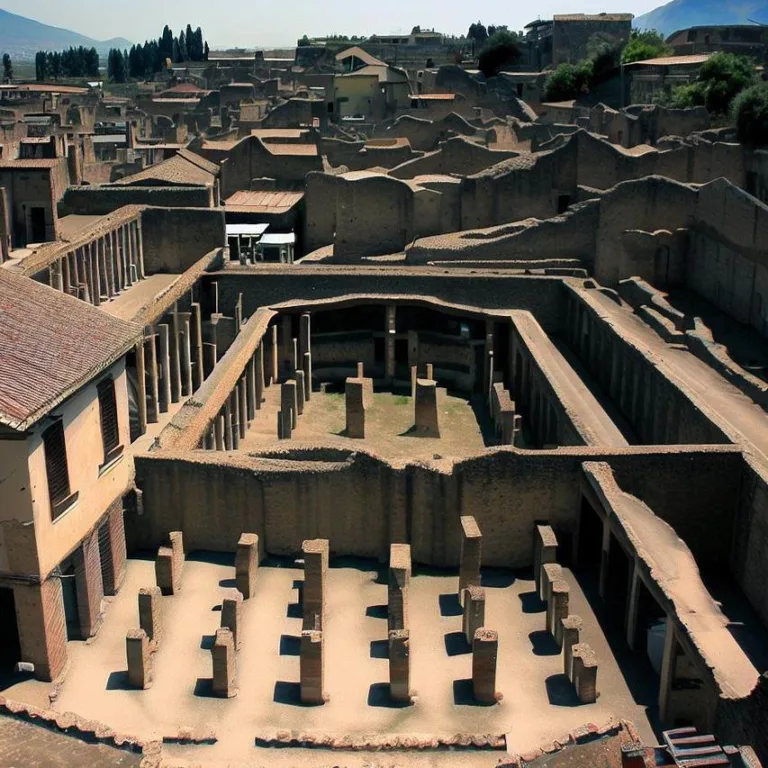Welcome to our comprehensive exploration of Herculaneum, an ancient Roman city that offers us invaluable insights into the daily lives, architecture, and culture of that era. As we delve into the history of Herculaneum, we’ll uncover fascinating details about its excavation, its remarkable preservation, and the remarkable stories it tells about life in antiquity.
Uncovering herculaneum’s rich heritage
Herculaneum, a thriving city in ancient Rome, was tragically buried under volcanic ash during the catastrophic eruption of Mount Vesuvius in 79 AD. Over centuries, the city lay hidden and forgotten beneath layers of ash and debris, until its rediscovery in the 18th century. This momentous event led to one of the most significant archaeological revelations in history.
A glimpse into daily life
Walking through the well-preserved streets of Herculaneum is like stepping back in time. The ruins offer a unique window into the everyday existence of its inhabitants. The remarkably preserved buildings, including private residences and public structures, provide a glimpse into the layout and design of Roman homes, public baths, and gathering places.
Architectural marvels
The architectural prowess of the Romans is evident in the ruins of Herculaneum. Intricate mosaics, frescoes, and sculptures adorn the walls and floors of houses, illustrating the artistic sensibilities of the time. The ingenious engineering of the city’s infrastructure, such as its advanced sewage and water systems, showcases the Romans‘ innovative approach to urban planning.
Preservation through catastrophe
The volcanic eruption that buried Herculaneum under layers of ash paradoxically contributed to its exceptional preservation. The intense heat and pyroclastic flows created an airtight environment that encapsulated the city, protecting it from the ravages of time and weather. As a result, many organic materials, such as wooden furniture and carbonized scrolls, survived, providing researchers with unparalleled insights into various aspects of ancient Roman life.
Rediscovery and ongoing research
Herculaneum’s rediscovery in the 18th century marked the beginning of systematic excavations that continue to this day. Archaeologists have unearthed a treasure trove of artifacts, revealing the diverse cultural influences and trading networks that existed during the Roman Empire. Ongoing research and technological advancements continue to shed light on Herculaneum’s history and contribute to our understanding of the ancient world.
Q: How does Herculaneum differ from Pompeii?
A: Herculaneum and Pompeii were both ancient Roman cities that suffered the same fate during the eruption of Mount Vesuvius. However, Herculaneum’s preservation differs in that it retained organic materials due to the unique conditions of its burial.
Q: Can visitors explore Herculaneum today?
A: Yes, Herculaneum is open to visitors. The archaeological site allows you to walk through the well-preserved streets, enter ancient buildings, and admire the intricate details of Roman life.
Q: What can we learn from Herculaneum’s artifacts?
A: Herculaneum’s artifacts provide insights into various aspects of Roman society, including art, architecture, daily life, and technology. The preserved scrolls have also offered glimpses into ancient literature and philosophy.
Q: How significant is Herculaneum in understanding Roman history?
A: Herculaneum plays a pivotal role in understanding Roman history and culture. Its artifacts and structures offer a complementary perspective to what we learn from texts and other archaeological sites, enriching our understanding of ancient life.
Q: What challenges do researchers face in studying Herculaneum?
A: Researchers face challenges such as ongoing preservation efforts, deciphering carbonized scrolls, and piecing together fragmented artifacts. Additionally, the site’s proximity to modern settlements requires careful balance between conservation and accessibility.
Viz také:






